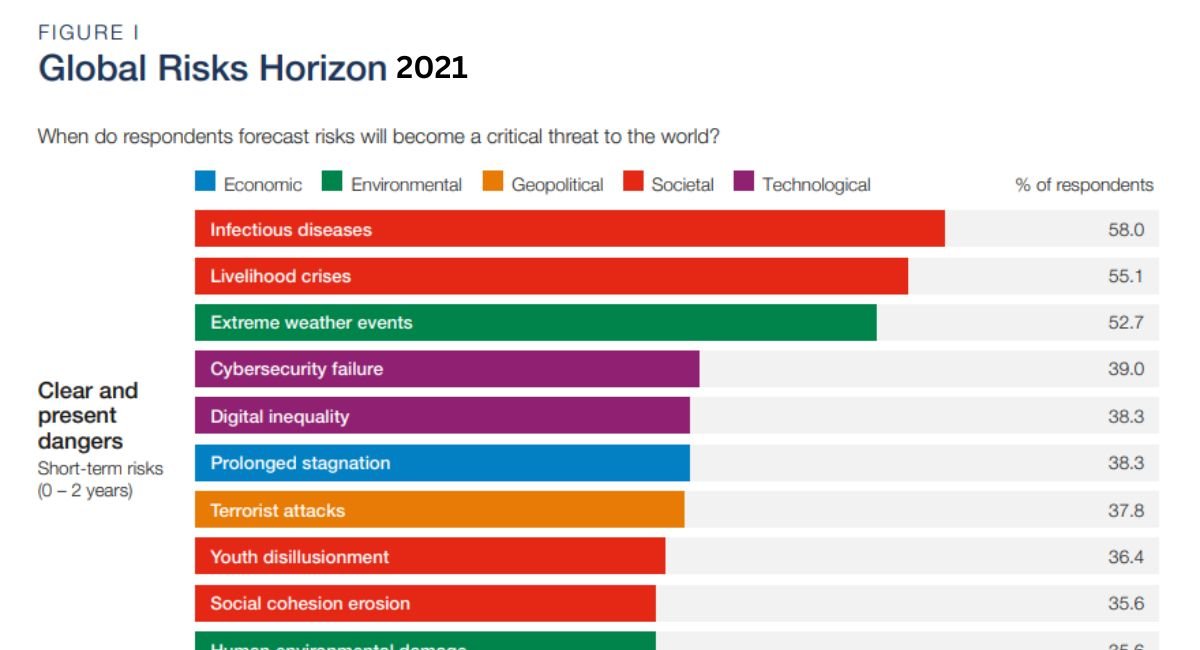2021 was a year of unprecedented global challenges. The world grappled with a myriad of risks that not only tested the resilience of nations but also reshaped the geopolitical, economic, and social landscapes. As we delve into the principales riesgos mundiales 2021, it becomes clear that the convergence of various crises has created a complex web of threats, each interconnected and often exacerbating one another. From pandemics and climate change to political instability and technological disruptions, the year’s risks highlight the need for a coordinated global response.
The Impact of the COVID-19 Pandemic
The COVID-19 pandemic remained one of the most significant risks throughout 2021. Its impact was far-reaching, affecting not just public health but also economies, social systems, and international relations. The emergence of new variants and uneven vaccine distribution perpetuated the crisis, leading to prolonged lockdowns, disruptions in global supply chains, and economic downturns. Countries around the world faced the dual challenge of managing public health crises while attempting to revive their economies. In many cases, this led to increased government debt and inflation, further complicating recovery efforts.
Climate Change and Environmental Degradation
Another critical global risk that dominated 2021 was climate change. The year saw an alarming increase in extreme weather events, from wildfires in Australia and California to floods in Europe and Asia. These events underscored the urgent need for comprehensive climate action. The COP26 summit, held in Glasgow, aimed to address these challenges by setting new targets for reducing greenhouse gas emissions. However, the varying commitments from countries and the gap between pledges and actions highlighted the complexities of global climate governance. Environmental degradation, driven by deforestation, pollution, and unsustainable practices, also continued to threaten biodiversity and natural resources, posing long-term risks to human health and livelihoods.
Geopolitical Tensions and Conflicts
Geopolitical tensions were another major risk factor in 2021. From the ongoing conflict in Syria to rising tensions between the United States and China, the year was marked by a series of political and military standoffs. The situation in Afghanistan, with the withdrawal of US troops and the subsequent takeover by the Taliban, added another layer of instability to the global order. These events not only affected the countries involved but also had broader implications for regional and global security. Cybersecurity threats also escalated, with state-sponsored attacks targeting critical infrastructure and private companies, raising concerns about digital sovereignty and the security of global communication networks.
Economic Risks and Inequality
The economic fallout from the COVID-19 pandemic revealed deep-seated vulnerabilities in the global economy. 2021 was a year of stark contrasts: while some countries and sectors experienced robust recoveries, others lagged behind, exacerbating existing inequalities. Emerging markets and developing economies were particularly hard hit, facing challenges such as capital flight, debt crises, and reduced access to vaccines. The risk of inflation also loomed large, driven by supply chain disruptions, rising commodity prices, and expansive fiscal policies. These economic disparities have not only strained social fabrics but have also fueled populism and social unrest in various parts of the world.
Technological Disruptions and Cybersecurity Threats
Technological advancements, while offering immense benefits, also presented significant risks in 2021. The rapid pace of digital transformation, accelerated by the pandemic, exposed vulnerabilities in cybersecurity. High-profile ransomware attacks, such as those on the Colonial Pipeline and JBS Foods, highlighted the growing threat of cybercrime and the potential for widespread disruption. In addition, the rise of misinformation and disinformation on social media platforms posed risks to democratic processes and social cohesion. As technology continues to evolve, the challenge lies in balancing innovation with security and ethical considerations.
Social and Political Instability
Social and political instability emerged as another major risk in 2021. The pandemic exacerbated existing social inequalities and exposed weaknesses in governance systems worldwide. Protests and civil unrest, driven by a range of issues from economic grievances to demands for political reform, were seen across various regions, including the Americas, Europe, and Asia. The erosion of trust in institutions and the rise of populist movements further fueled divisions, creating an environment of uncertainty and volatility. In many countries, the challenge of maintaining social cohesion in the face of diverse and often competing interests became increasingly evident.
Health Risks Beyond COVID-19
While COVID-19 dominated headlines, other health risks also posed significant threats in 2021. The resurgence of diseases like Ebola in parts of Africa, coupled with the ongoing challenge of antimicrobial resistance, highlighted the fragility of global health systems. The pandemic also disrupted routine healthcare services, leading to setbacks in the fight against diseases such as HIV, tuberculosis, and malaria. Mental health emerged as a critical concern, with the stresses of the pandemic contributing to a global rise in anxiety, depression, and other mental health disorders. These health risks underscore the need for resilient healthcare systems that can respond to both known and emerging threats.
The Role of International Cooperation
Given the interlinked nature of these global risks, international cooperation became more crucial than ever in 2021. Multilateral organizations such as the United Nations, World Health Organization, and International Monetary Fund played vital roles in coordinating responses to various crises. However, the challenges of vaccine nationalism, geopolitical rivalries, and differing national interests often hampered collective action. The year demonstrated that while global problems require global solutions, achieving consensus and effective collaboration remains a formidable challenge.
The Path Forward: Building Resilience
As we reflect on the principales riesgos mundiales 2021, it is clear that the path forward requires a focus on resilience. This involves not just preparing for future shocks but also addressing the underlying vulnerabilities that make societies and economies susceptible to crises. Strengthening public health systems, promoting sustainable development, fostering inclusive economic growth, and enhancing global governance structures are essential steps in this direction. The lessons learned in 2021 offer valuable insights into building a more resilient and equitable world.
FAQs
- What were the principales riesgos mundiales 2021?
The principales riesgos mundiales 2021 included the COVID-19 pandemic, climate change, geopolitical tensions, economic instability, technological disruptions, social unrest, and various health risks beyond COVID-19.
- How did the COVID-19 pandemic influence global risks in 2021?
The COVID-19 pandemic exacerbated existing global risks and introduced new challenges, such as health crises, economic downturns, social inequality, and geopolitical tensions. It highlighted the need for robust public health systems and international cooperation.
- What were the major economic risks in 2021?
Major economic risks in 2021 included inflation, debt crises in emerging markets, uneven economic recovery, and widening inequality. These risks were driven by the pandemic’s impact on global supply chains, fiscal policies, and economic disparities between nations.
- How did climate change contribute to global risks in 2021?
Climate change contributed to global risks in 2021 through extreme weather events, environmental degradation, and challenges in achieving international climate agreements. These risks highlighted the urgency of global climate action and the complexities of implementing effective policies.
- Why was cybersecurity a significant risk in 2021?
Cybersecurity was a significant risk in 2021 due to the increase in cyberattacks, ransomware incidents, and digital vulnerabilities exposed by rapid technological adoption. These threats impacted critical infrastructure, businesses, and government operations worldwide.
- What steps are needed to build resilience against global risks?
Building resilience against global risks requires strengthening public health systems, promoting sustainable and inclusive economic growth, enhancing international cooperation, and addressing underlying vulnerabilities in governance and social structures.
Conclusion
HTTPS://Finanzasdomesticas.com/Principales-Riesgos-Mundiales-2021/ have shown that the global community faces a complex array of challenges that require coordinated efforts and innovative solutions. From pandemics and climate change to economic instability and geopolitical tensions, the risks of the past year have underscored the importance of resilience, cooperation, and foresight. As we move forward, the ability to anticipate, mitigate, and adapt to these risks will be crucial in shaping a safer and more prosperous future for all.


